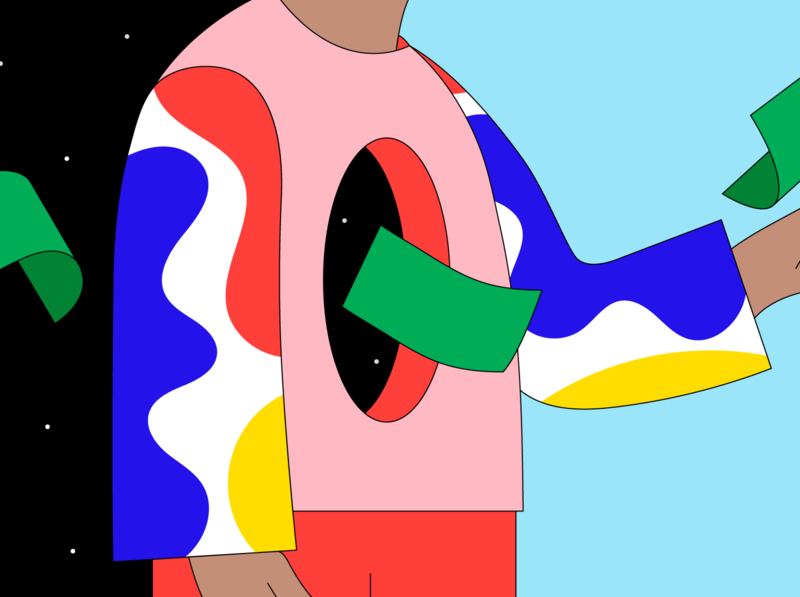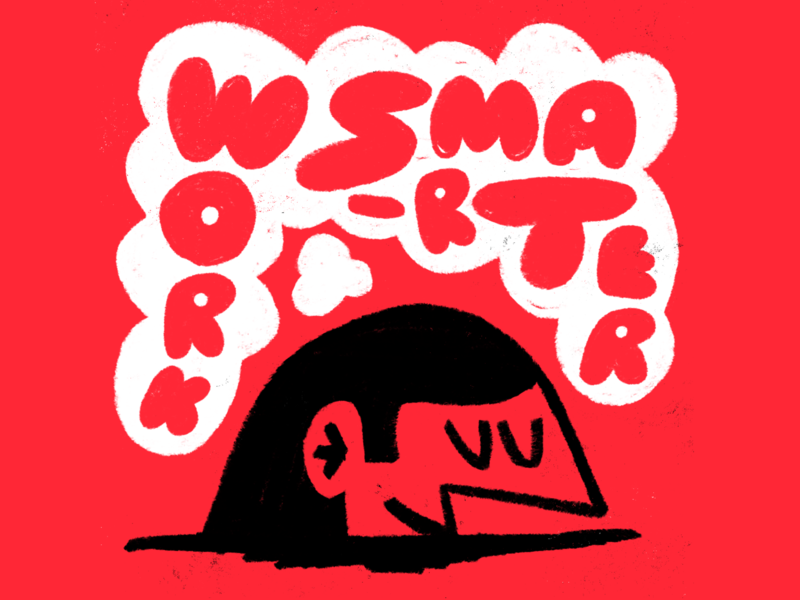Many creative practitioners dream of running their own business—whether it be freelancing full-time under their own name or launching a small design studio with their peers. But while the entrepreneur’s life can appear glamorous on the outside, it can often feel overwhelming and confusing especially when you’re first starting out and feel like you have no idea what you’re doing.
To help relieve some of the stress and anxiety around this huge commitment, we’re turning to some veterans in the Dribbble community who have gone through the challenges of what it means to launch your own creative business. Let these designers and self-made entrepreneurs help guide the way with some sound pieces of advice they have to offer:
Don’t be afraid to lose clients
Katie Cooper, Freelance Creative Director & Brand Strategist:
Finding work at first is difficult, but once you find it, a snowball effect happens. Your clients are friends with other people doing amazing things and if you treat them right, do a good job, and ask them to refer you, they usually will. Plus they will come back for more.
Don’t be afraid to lose clients—especially if they aren’t a good fit or won’t pay you appropriately. There is always more work to come around.
Create multiple income sources
Lexi Smith, Business Coach & Freelance Creative Director:
One of the most challenging things about being a freelancer is relying on client work to pay your bills. The reason why this is tough is because we can find ourselves in difficult situations when clients don’t pay, disappear, or just plain suck. The last thing you want to do when pitching your services to a potential client is sound desperate or even discount your services way too much.
By creating other income sources we are able to have more freedom, less stress, and the ability to take bigger risks! As a designer, you can look into many different ways to create more income sources. You can sell your rejected client designs on sites like Creative Market as templates, or you can sell your illustrations on Society6 or Printful. The options are endless!
Another way to make sure your clients pay you on time is by using software like Bonsai. Using one of their many professional invoice templates, you can create and send (even automate) invoices to your clients, informing them of the payment date and any late-fee charges that may occur.
Don’t get discouraged and stay busy
Lisa Engler, Independent Designer & Illustrator:
Keep a list, either written or mental, of all of the stuff that you can do to make your future self’s life easier. Doing this keeps me from freaking out or wanting to just give up on freelancing because no one hired me to do anything this week. There’s always a million things that you can do that will benefit your future self. Whether it’s doing some personal work or updating your portfolio, or posting some stuff on Dribbble. Have things to keep yourself busy when the work isn’t coming in so that way you don’t get totally discouraged.
Pro Tip: A great way to motivate yourself is by using software like Bonsai. Whether you want to send a proposal to a potential client or create and track tasks for a passion project, Bonsai will help you every step of the way.
Invest time in passion projects
Paul Zappia, Co-Founder of Down The Street Designs:
Personal projects played a key role in the success of our business. Our passion projects helped showcase our style and the type of work we wanted to do. In terms of narrowing down the kind of work we accepted, it was really about putting only illustration and animation projects into our social media accounts and website. I wouldn’t recommend displaying work that you don’t enjoy creating.
Work smart and say ‘No’
Aron Leah, Owner of Fried Cactus Design Studio:
It’s really easy to get into that routine of saying ‘Yes’ to everything. You take on more than you can handle and you start sacrificing personal time to hit deadlines. Working every hour available has good intentions for the short term but is detrimental to the long term.
Communicate where you’re at with people in terms of your schedule and workload. If the project is meant to be, it’ll happen. If not, something will catch you.
Working smart is scary and difficult to do but taking personal time will make you more effective and keeps the creative fire burning. If you are faced with a problem that is taking more than a couple of hours to solve, put down the tools and go indulge in something you enjoy. Come back to the problem and smash it out of the park!
Related articles:
- A typical workday for graphic design studio owner Laura Prpich
- Growing a UI/UX design agency in the evolving tech scene of San Francisco
- Punkpost’s CEO on the power of physical products in a digital age
Find more Community stories on our blog Courtside. Have a suggestion? Contact stories@dribbble.com.













